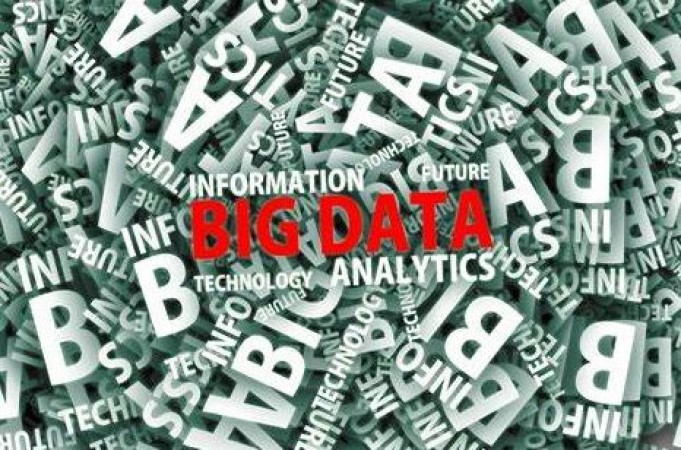
In the face of escalating environmental challenges, conservation efforts have become more crucial than ever before. The convergence of technology and environmental conservation has paved the way for innovative solutions, with big data emerging as a transformative force in safeguarding our planet. This article delves into the pivotal role big data plays in environmental conservation, exploring its applications, benefits, challenges, and ethical considerations.
Understanding Big Data in Environmental Conservation
Defining Big Data
Big data refers to vast and complex datasets that require advanced tools and techniques to analyze effectively. It encompasses structured and unstructured data from various sources, including sensors, satellites, social media, and more. In the context of environmental conservation, big data encompasses diverse information related to ecosystems, wildlife, weather, and human impact on the environment.
Importance of Environmental Conservation
Environmental conservation is imperative to preserve biodiversity, protect natural resources, and ensure a sustainable future for generations to come. The health of ecosystems directly impacts the well-being of all living organisms on Earth, making conservation a global priority.
The Convergence of Big Data and Conservation Efforts
The integration of big data and environmental conservation has revolutionized the way researchers, scientists, and policymakers approach challenges. Advanced analytics and data-driven insights enable informed decision-making, leading to more effective conservation strategies.
Applications of Big Data in Environmental Conservation
Wildlife Monitoring and Protection
Big data plays a vital role in monitoring and protecting wildlife populations. Sensor-enabled collars and drones equipped with cameras provide real-time data on animal movements, behavior, and habitats. Analyzing this data helps identify threats and design targeted conservation measures.
Deforestation and Reforestation Analysis
The alarming rate of deforestation necessitates immediate action. Big data analysis helps track deforestation hotspots, assess the extent of damage, and monitor reforestation efforts. This information aids in formulating policies to combat deforestation and promote sustainable land use.
Climate Change and Adaptation Strategies
Big data assists in understanding climate change patterns and predicting future trends. This knowledge is instrumental in devising adaptation strategies to mitigate the impact of climate change on vulnerable ecosystems and communities.
Water Resource Management
Effective management of water resources is essential for sustaining life and ecosystems. Big data analytics helps monitor water quality, usage patterns, and availability, leading to efficient water management practices.
Air Quality Monitoring and Pollution Control
Air pollution poses significant threats to both human health and the environment. Big data technologies monitor air quality in real-time, enabling authorities to implement measures that reduce pollution levels and protect public health.
Challenges in Implementing Big Data for Environmental Conservation
Data Collection and Analysis
The sheer volume and variety of data present challenges in collecting, processing, and analyzing information. Advanced algorithms and computing power are necessary to derive meaningful insights from large datasets.
Privacy and Security Concerns
As big data involves sensitive information, ensuring data privacy and security is paramount. Striking a balance between data openness for research and safeguarding individual privacy is a constant challenge.
Technical Infrastructure and Expertise
Implementing big data solutions requires robust technical infrastructure and skilled personnel. Many conservation organizations face resource limitations and may struggle to harness the full potential of big data.
Benefits of Utilizing Big Data in Environmental Conservation
Data-Driven Decision Making
Data-driven decision-making empowers conservationists with evidence-based insights. By leveraging big data, conservation strategies can be fine-tuned for maximum impact.
Predictive Analytics for Conservation Planning
Big data analytics enable predictive modeling, allowing conservationists to anticipate environmental changes and plan proactive measures.
Enhancing Conservation Awareness
Utilizing big data in public awareness campaigns fosters greater understanding and appreciation of conservation efforts, inspiring more individuals to take action.
Efficient Resource Allocation
Big data aids in optimizing resource allocation for conservation projects, ensuring that funds and efforts are directed where they are most needed.
Case Studies: Big Data Success Stories in Environmental Conservation
The Great Elephant Census
The Great Elephant Census, conducted between 2014 and 2016, utilized big data and aerial surveys to assess African elephant populations comprehensively. The findings revealed crucial information about population dynamics and threats, guiding conservation efforts to protect these majestic creatures.
The Rainforest Connection
The Rainforest Connection uses recycled smartphones equipped with solar panels and sensors to detect illegal logging activities in rainforests. By processing audio data in real-time, this innovative project has significantly contributed to forest protection.
Project Premonition
Project Premonition employs big data and drones to collect data on disease-carrying mosquitoes and identify potential disease outbreaks before they occur. This proactive approach has the potential to save countless lives.
Future Prospects and Innovations
Artificial Intelligence and Machine Learning Integration
The integration of artificial intelligence and machine learning with big data promises to revolutionize conservation efforts further. AI-powered systems can analyze vast datasets swiftly, enabling real-time decision-making.
Internet of Things (IoT) for Ecosystem Monitoring
IoT devices equipped with sensors can continuously monitor environmental parameters, providing critical data for conservationists to respond to changing conditions promptly.
Collaborative Data Sharing and Open Science Initiatives
Promoting collaborative data sharing among researchers and institutions fosters a more comprehensive understanding of environmental issues and encourages innovative solutions.
Ethical Considerations in Big Data Usage for Conservation
Informed Consent and Data Ownership
Respecting the rights and privacy of individuals and communities involved in data collection is essential. Informed consent and fair data ownership agreements must be established.
Balancing Conservation and Human Interests
Conservation efforts should strike a balance between protecting the environment and considering human livelihoods and needs.
Mitigating Biases in Data Collection
To ensure equitable conservation outcomes, it is crucial to mitigate biases that may arise from data collection methodologies.
Big data has emerged as a game-changer in environmental conservation. Its applications, ranging from wildlife monitoring to climate change analysis, have transformed the way we approach conservation challenges. Leveraging the power of big data empowers us to make informed decisions, leading us closer to a more sustainable and environmentally conscious world.
Virtual Reality Therapy: Using VR to Treat Mental Health Disorders
Creating Unforgettable Memories: The Magic of Amazing Wedding Events